Getting the Most Out of Your Lacrosse Stick and Game SetGetting the Most Out of Your Lacrosse Stick and Game Set
Selecting the Right Lacrosse Stick Net
Choosing the optimal lacrosse stick net is crucial for maximizing ball control and handling. The net refers to the woven mesh pocket at the head of the stick which cradles the ball. As a key piece of equipment, you’ll want to select a net based on your position, skill level, and preferences.
For attack players who handle the ball frequently, a soft, shallow pocket is ideal for quick passing and shots on goal. Midfielders benefit from a medium depth pocket with a blend of hold and release. Defenders need a deeper net to protect ground balls and withstand checks. Goalies prefer extra deep pockets to better stop shots.
In addition to pocket depth, consider net materials like nylon, polyester, and leather. Nylon nets are very affordable and provide good durability. Polyester pockets are weather-resistant, maintain their shape, and offer a smooth release when throwing. Leather nets soften over time for excellent ball control.
Mesh size is another factor, with wider diamond shaped patterns better for beginners learning to catch. Tighter stringing patterns increase ball retention for experienced players. It’s also important to get the right sidewall stringing based on your stick head’s design. A properly strung pocket improves handling and passing accuracy.
While pre-strung mesh nets are available, custom stringing provides a more customized feel. Work with a specialized lacrosse pro shop to match the net to your playing style. With the right net, you’ll notice significant gains in ball control, passing, catching, scooping, and shooting.
Ensuring Proper Stringing for Optimal Ball Control
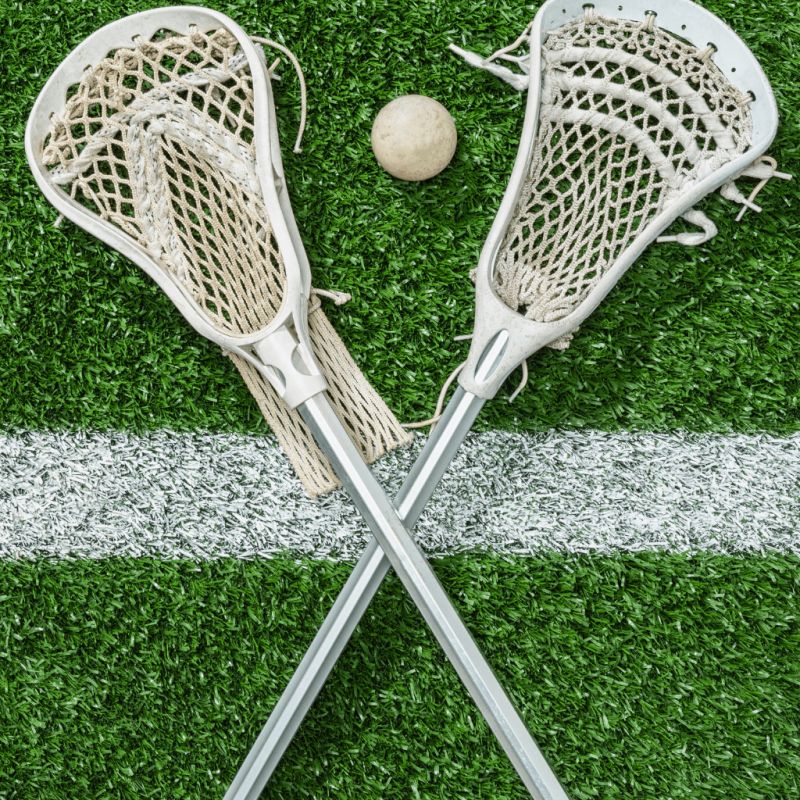
After selecting the ideal lacrosse stick net, the next critical step is stringing the pocket properly. Correct stringing is vital for achieving excellent ball control, handling, and release when passing or shooting. Taking the time to string your stick properly or having it done right by a professional will make a major difference in your performance on the field.
The key areas to focus on during stringing are the pocket depth, pocket shape, channel, and whip. The depth of the pocket affects how easily you can catch and retain possession of ground balls. A pocket that’s too shallow will cause the ball to slip out, while an overly deep pocket makes it tough to get a quick release when passing. The ideal depth ranges from 3 to 5 inches for most players depending on position.
Shaping the pocket helps grant you more control when cradling the ball on runs or looking to pass or shoot with accuracy. A flat pocket shape gives the ball less stability, while excessive bagginess can diminish ball speed on shots. Finding the right medium pocket shape for your style takes testing and practice.
Creating an optimal channel—the grooved sweet spot at the center of the pocket—is also vital. A crisp channel lets you guide the ball directly into the pocket quickly when passing and retains it securely. Stringing a cleanly defined central channel makes ball control much more instinctive.
Finally, having the right amount of whip on your shots is key. More whip builds power but reduces accuracy, while less whip provides precision but slower ball speed. Configuring the pocket and shooters with the ideal degree of whip can be tricky but impactful. An experienced stringer can help optimize it.
With the right pocket stringing, you’ll notice cleaner catches, improved ball retention, more control when cradling, and the ability to pass and shoot with both power and pinpoint placement. Don’t settle for a pre-strung pocket. Take time to properly string your stick for a clear competitive edge.
Choosing a Durable Lacrosse Stick Shaft

The lacrosse stick shaft is a core component that influences your level of ball control, shooting and passing accuracy, and ability to withstand checks. With so much riding on your shaft, taking time to select the right one is crucial for performance.
Shaft materials are the first consideration. Aluminum shafts are lightweight and affordable but prone to bending. Titanium alloys grant superior strength at a higher cost. Scandium-titanium combines strength and lightness. Composite shafts made of materials like carbon fiber are popular for their durability and weight.
Shaft shape is another factor. Octagonal and hexagonal shapes provide a better grip compared to round handles. Concave indentations give added control and comfort. Consider grip tape or other textures if you want more stick friction.
For close stick handling and quick passing, shorter shafts in the 30-40 inch range allow greater control. Defenders benefit from longer shafts up to 72 inches to maximize poke checking reach. Midfielders often prefer a middle length around 52-60 inches.
Flex and stiffness levels in the shaft are also variable. A rigid, inflexible shaft offers more passing and shooting speed but can hinder ball control. Highly flexible shafts bend easily for cradling but have less power. Finding your optimal blend of flex takes testing different shaft stiffnesses.
Consider extra features like interchangeable handles that allow tweaking flex and length preferences. Some shafts have adjustable ports to balance weight distribution. Ergonomic non-slip grips aid handling. Removable end caps let you modify handle length.
With experimentation across brands and models, you can dial in a shaft that caters to your position, skills, and style of play for peak performance.
Finding the Correct Stick Head for Your Position
Defenders: Deep Pockets for Ball Protection
Defenders require deeper pockets to secure ground balls and withstand aggressive checks from opponents. The increased depth provides better ball control during defensive plays and long-distance passes.
Goalies: Maximum Depth for Shot Stopping
Goalies prefer extra-deep pockets to enhance their ability to stop incoming shots. The deep pocket allows for better ball absorption, reducing the chances of rebounds and improving overall shot-stopping capabilities.
Understanding Lacrosse Net Materials and Their Impact
The material of your lacrosse net plays a crucial role in its performance and durability. Each material offers unique advantages:
- Nylon: Affordable and durable, ideal for beginners and recreational players
- Polyester: Weather-resistant with excellent shape retention, suitable for all-weather play
- Leather: Softens over time, providing superior ball control for experienced players
Is mesh size important in lacrosse nets? Indeed, it significantly affects ball control and catching ability. Wider diamond patterns are beneficial for beginners learning to catch, while tighter stringing patterns increase ball retention for experienced players.

The Art of Proper Lacrosse Stick Stringing
Correct stringing is paramount for achieving optimal ball control, handling, and release. Professional stringing or learning to string your stick properly can dramatically improve your game performance.
Key Elements of Proper Stringing
- Pocket Depth: Typically ranges from 3 to 5 inches, depending on position and preference
- Pocket Shape: Affects ball stability and release speed
- Channel: The central groove that guides the ball into the pocket
- Whip: Influences shot power and accuracy
How does pocket depth affect lacrosse performance? A shallow pocket allows for quick release but may compromise ball retention, while a deep pocket enhances ball control but can slow down passes and shots. Finding the right balance is crucial for your playing style.
Selecting the Ideal Lacrosse Stick Shaft
The lacrosse stick shaft is a critical component that affects your overall performance. Considerations when choosing a shaft include:
Shaft Materials
- Aluminum: Lightweight and affordable, but prone to bending
- Titanium Alloys: Superior strength, higher cost
- Scandium-Titanium: Balanced strength and lightness
- Composite (e.g., carbon fiber): Durable and lightweight
Shaft Shape and Grip
Octagonal and hexagonal shapes provide better grip compared to round handles. Some players prefer concave indentations for added control and comfort. Grip tape or textured surfaces can enhance stick friction for improved handling.

Shaft Length
How does shaft length affect playing style in lacrosse? Shorter shafts (30-40 inches) offer greater control for close stick handling and quick passing. Defenders benefit from longer shafts (up to 72 inches) for maximized poke checking reach. Midfielders often prefer a middle ground of 52-60 inches.
Optimizing Lacrosse Head Design for Your Playing Style
The design of your lacrosse head can significantly impact your performance on the field. Different head designs cater to specific playing styles and positions.
Offensive Head Designs
Offensive players typically prefer narrower heads with a more pinched face shape. This design facilitates quicker ball release and improved accuracy for passing and shooting. The narrower profile also makes it more challenging for defenders to check the stick effectively.
Defensive Head Designs
Defensive players benefit from wider, more robust head designs. These heads offer a larger surface area for intercepting passes and scooping ground balls. The increased width also provides better durability to withstand aggressive checking and physical play.

Face-Off Specialist Heads
Face-off specialists often use specially designed heads with a narrow throat and flexible scoop. This configuration allows for quick clamping on the ball during face-offs and rapid transitions to offense or defense.
How does the flexibility of a lacrosse head affect performance? More flexible heads can improve ball retention and provide a softer feel when catching, while stiffer heads offer increased accuracy and power for shooting and passing.
Maintaining Your Lacrosse Equipment for Longevity and Performance
Proper maintenance of your lacrosse equipment is essential for ensuring longevity and consistent performance. Regular care can significantly extend the life of your gear and maintain its effectiveness on the field.
Cleaning Your Lacrosse Stick
Regularly clean your lacrosse stick to prevent dirt and debris buildup, which can affect ball control and pocket performance. Use mild soap and water to clean the head and pocket, avoiding harsh chemicals that could damage the materials.

Restringing and Pocket Maintenance
Periodically check your pocket for wear and tear. Restring your stick when you notice fraying or loosening of the strings. Consistently breaking in your pocket helps maintain its shape and performance over time.
Shaft Care
Inspect your shaft regularly for dents, cracks, or other damage. For metal shafts, use fine-grit sandpaper to smooth out minor scratches. Apply a thin layer of wax or polish to protect the surface and maintain grip.
How often should you replace your lacrosse equipment? While it varies based on usage and care, generally, replace your stick head every 1-2 seasons, and your shaft every 2-3 seasons for optimal performance.
Advanced Techniques for Customizing Your Lacrosse Stick
Customizing your lacrosse stick can give you a competitive edge by tailoring the equipment to your specific playing style and preferences. Advanced players often experiment with various customization techniques to optimize their stick’s performance.
Custom Stringing Patterns
Experimenting with different stringing patterns can dramatically alter your stick’s performance. Some popular custom patterns include:

- Traditional: Offers excellent feel and control
- Mesh: Provides consistency in all weather conditions
- Hybrid: Combines elements of traditional and mesh for a unique feel
Pocket Forming Techniques
Advanced players often use specific techniques to shape their pockets for optimal performance:
- Ball-breaking: Repeatedly catching and throwing to soften the pocket
- Hot water treatment: Carefully using hot water to make the mesh more pliable
- Weighted ball: Using a heavier ball to stretch the pocket to the desired depth
How can customizing your lacrosse stick improve your game? Tailoring your stick to your specific needs can enhance ball control, increase shot accuracy, and improve overall handling, giving you a personalized tool that complements your skills and playing style.
Understanding Lacrosse Stick Regulations and Compliance
Adhering to official lacrosse stick regulations is crucial for competitive play. Understanding these rules ensures that your equipment is legal for use in official games and tournaments.

Stick Length Regulations
Stick length requirements vary by position and gender:
- Short stick (field players): 40-42 inches for men, 35.5-43.25 inches for women
- Long stick (defensemen): 52-72 inches for men, not used in women’s lacrosse
- Goalie stick: 40-72 inches for men, 35.5-52 inches for women
Head Dimensions
Lacrosse stick heads must meet specific dimensional requirements:
- Minimum width at the widest point: 6 inches for men, 7 inches for women
- Minimum distance between sidewalls: 3 inches for men, no specific requirement for women
Pocket Depth Restrictions
Pocket depth is regulated to ensure fair play:
- Men’s lacrosse: The ball must not sit lower than the bottom of the sidewall
- Women’s lacrosse: The ball must be visible above the sidewall when the stick is held horizontally
Why are lacrosse stick regulations important? These rules ensure a level playing field for all participants, maintain the integrity of the game, and promote safety by standardizing equipment specifications.

Selecting the Right Lacrosse Stick Net
Choosing the optimal lacrosse stick net is crucial for maximizing ball control and handling. The net refers to the woven mesh pocket at the head of the stick which cradles the ball. As a key piece of equipment, you’ll want to select a net based on your position, skill level, and preferences.
For attack players who handle the ball frequently, a soft, shallow pocket is ideal for quick passing and shots on goal. Midfielders benefit from a medium depth pocket with a blend of hold and release. Defenders need a deeper net to protect ground balls and withstand checks. Goalies prefer extra deep pockets to better stop shots.
In addition to pocket depth, consider net materials like nylon, polyester, and leather. Nylon nets are very affordable and provide good durability. Polyester pockets are weather-resistant, maintain their shape, and offer a smooth release when throwing. Leather nets soften over time for excellent ball control.
Mesh size is another factor, with wider diamond shaped patterns better for beginners learning to catch. Tighter stringing patterns increase ball retention for experienced players. It’s also important to get the right sidewall stringing based on your stick head’s design. A properly strung pocket improves handling and passing accuracy.
While pre-strung mesh nets are available, custom stringing provides a more customized feel. Work with a specialized lacrosse pro shop to match the net to your playing style. With the right net, you’ll notice significant gains in ball control, passing, catching, scooping, and shooting.
Ensuring Proper Stringing for Optimal Ball Control

After selecting the ideal lacrosse stick net, the next critical step is stringing the pocket properly. Correct stringing is vital for achieving excellent ball control, handling, and release when passing or shooting. Taking the time to string your stick properly or having it done right by a professional will make a major difference in your performance on the field.
The key areas to focus on during stringing are the pocket depth, pocket shape, channel, and whip. The depth of the pocket affects how easily you can catch and retain possession of ground balls. A pocket that’s too shallow will cause the ball to slip out, while an overly deep pocket makes it tough to get a quick release when passing. The ideal depth ranges from 3 to 5 inches for most players depending on position.
Shaping the pocket helps grant you more control when cradling the ball on runs or looking to pass or shoot with accuracy. A flat pocket shape gives the ball less stability, while excessive bagginess can diminish ball speed on shots. Finding the right medium pocket shape for your style takes testing and practice.
Creating an optimal channel—the grooved sweet spot at the center of the pocket—is also vital. A crisp channel lets you guide the ball directly into the pocket quickly when passing and retains it securely. Stringing a cleanly defined central channel makes ball control much more instinctive.
Finally, having the right amount of whip on your shots is key. More whip builds power but reduces accuracy, while less whip provides precision but slower ball speed. Configuring the pocket and shooters with the ideal degree of whip can be tricky but impactful. An experienced stringer can help optimize it.
With the right pocket stringing, you’ll notice cleaner catches, improved ball retention, more control when cradling, and the ability to pass and shoot with both power and pinpoint placement. Don’t settle for a pre-strung pocket. Take time to properly string your stick for a clear competitive edge.
Choosing a Durable Lacrosse Stick Shaft

The lacrosse stick shaft is a core component that influences your level of ball control, shooting and passing accuracy, and ability to withstand checks. With so much riding on your shaft, taking time to select the right one is crucial for performance.
Shaft materials are the first consideration. Aluminum shafts are lightweight and affordable but prone to bending. Titanium alloys grant superior strength at a higher cost. Scandium-titanium combines strength and lightness. Composite shafts made of materials like carbon fiber are popular for their durability and weight.
Shaft shape is another factor. Octagonal and hexagonal shapes provide a better grip compared to round handles. Concave indentations give added control and comfort. Consider grip tape or other textures if you want more stick friction.
For close stick handling and quick passing, shorter shafts in the 30-40 inch range allow greater control. Defenders benefit from longer shafts up to 72 inches to maximize poke checking reach. Midfielders often prefer a middle length around 52-60 inches.
Flex and stiffness levels in the shaft are also variable. A rigid, inflexible shaft offers more passing and shooting speed but can hinder ball control. Highly flexible shafts bend easily for cradling but have less power. Finding your optimal blend of flex takes testing different shaft stiffnesses.
Consider extra features like interchangeable handles that allow tweaking flex and length preferences. Some shafts have adjustable ports to balance weight distribution. Ergonomic non-slip grips aid handling. Removable end caps let you modify handle length.
With experimentation across brands and models, you can dial in a shaft that caters to your position, skills, and style of play for peak performance.
Finding the Correct Stick Head for Your Position
Complementing your shaft with the ideal lacrosse stick head is imperative for maximizing your abilities. Heads come in a range of shapes, sizes, materials and features to align with different playing positions and styles.
For attackmen, small narrow heads in the 6-9 inch width range provide superior ball control and quick passing. Middies often favor mid-sized heads around 10-12 inches wide for a balance of handling and power. Defenders need wider heads up to 15 inches to scoop up ground balls and protect their territory.
Head shapes also vary from rounded to more pointed. Rounded shapes are better for beginners learning catching and passing fundamentals. Experienced players often upgrade to more pointed heads for increased ball velocity in shooting and passing.
In addition to the dimensions, lacrosse heads come in different stiffness options. More rigid heads offer more rebound on shots for power but can be tougher to control. More flexible heads are easier to compress and manage but sacrifice some ball speed.
Various lacrosse head materials also provide different properties. Traditional plastic heads are affordable and sufficiently durable. Composite heads fuse plastic with other alloys for increased stiffness and reduced weight. Metallic heads made of alloys like titanium deliver superior ball speed when shooting.
Stringing holes affect pocket depth and ball retention. Heads with more stringing holes allow deeper pocket customization. Removable sidewall stringing gives you more options to tweak pocket shape for optimal control.
With the right head matched to your position and experience level, you’ll notice improvements in ball handling, passing accuracy, shot speed, ground ball scooping, and durability over the course of a season.
Maintaining Your Stick’s Condition and Pocket Shape

After selecting the optimal lacrosse stick setup, ongoing maintenance is essential for preserving its playability and function. Proper care extends the life of your stick and ensures it performs consistently throughout the season.
Storing sticks properly when not in use prevents damage. Keep sticks in a cool, dry place out of direct sunlight when possible. Letting sticks sit in hot cars or garages can warp heads and compromise integrity.
Inspect heads and shafts regularly for cracks or warping, and replace damaged parts immediately. Look for fraying or loosened shooting strings, sidewall strings, and mesh nets, and re-string as needed. Tight knots prevent loosening.
Clean heads and mesh routinely by hand washing with warm water and mild detergent, then rinse thoroughly. This prevents buildup of dirt, grass, and mud that impedes proper stringing tension and pocket shape.
Apply waterproofing spray to the mesh occasionally to prevent waterlogging. Soaking and re-shaping the pocket intermittently maintains the ideal pocket form as mesh naturally stretches from use. Spot re-stringing maintains pocket integrity.
Wipe down shafts regularly with a damp cloth to prevent dirt buildup that diminishes grip and feel. Check end caps for secure fit. Consider taping or regripping shafts occasionally to restore non-slip grip.
Avoid exposing stick components to excessive moisture or humidity for prolonged periods. Allow sticks to air dry completely after use or washing. Ensure all parts are dry before storage.
With consistent care and maintenance, your lacrosse stick will maintain its optimal characteristics longer and boost skills development. Take time for preventive upkeep and respond promptly to any wear or damage issues.
Determining Ideal Stick Length and Weight
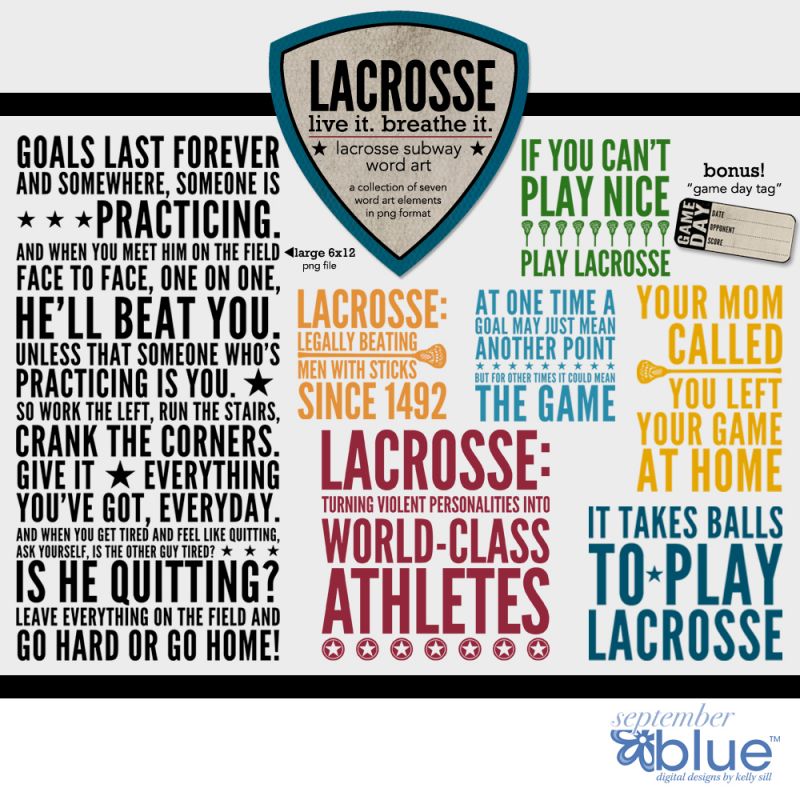
Finding the optimal lacrosse stick length and weight can take testing, but getting it right enhances performance. The right stick dimensions allow you to handle, pass, catch, scoop and shoot most efficiently.
For starters, consider your player position. Attackmen tend to favor shorter sticks around 40-42 inches for tighter stickhandling and quicker passing and shooting. Defenders need longer sticks in the 52-72 inch range to maximize checking reach.
Midfielders can benefit from varying lengths depending on style, typically in the 46 to 60 inch range. More offensive-minded midfielders may opt for shorter sticks, while more defensive middies prefer more length.
Your height is a factor, as taller players can control longer sticks more easily. But skill level trumps height, so choose a length based on ability first. Beginners do better with shorter sticks until handling improves. Youth players need sticks proportional to their size and strength.
Stick weight affects quickness of cradling, passing and shooting. Lighter sticks allow faster maneuvers but can be harder to control. Heavier sticks provide more stability but slow your hands. Finding the right balance for your needs takes experimenting.
Consider adjustability features that let you tweak length and weight. Some shafts allow adding or removing extensions pieces to customize handle length over time. Adjustable weighted ends give options for optimizing heft.
Test different stick weights and lengths in practice to gauge what allows you the best overall control, speed, and accuracy. This dialing in process takes some time, but getting your lacrosse stick dimensions right pays big dividends.
Upgrading to Advanced Stick Materials Like Carbon Fiber
As you advance in lacrosse, upgrading your stick’s materials to more high-tech composites can boost skills. Carbon fiber shafts and heads provide excellent durability, strength and lightweight maneuverability.
Carbon fiber shafts give you superior resilience against checks along with better flex and feel for cradling and passing. Durability is far greater than aluminum without extra weight. Vibration dampening enhances control.
The strength of carbon fiber resists bending and warping that can throw off shots. You get more responsiveness for crisper passing and increased shot power. And the lightness reduces fatigue over long games and seasons.
Carbon fiber lacrosse heads are also more rigid for improved ball velocity, yet still durable. The stiffened scoops make ground ball pickup easier. Thinner sidewalls result in decreased weight without sacrificing toughness.
Advanced composite heads also better maintain their structure and pocket shape over repeated use. This consistent rebound enhances the consistency of passes, catches and shots.
While premium composite sticks carry a higher price tag, their performance advantages make them a worthy investment if you play competitively. The right carbon fiber stick helps seasoned players take their speed, finesse and power to the next level.
With steady skills improvement, make the switch to carbon fiber sticks to shed excess weight, gain precision, and take more punishment without impacting your game. Carbon fiber grants true responsiveness and durability.
Experimenting with Different Head Shapes for Passing or Shooting

Lacrosse head shapes significantly influence passing, catching, scooping, cradling and shooting performance. Testing different head shapes can reveal which optimize your abilities.
More rounded heads provide a larger sweet spot for developing players to learn proper technique. The exaggerated curving helps grab errant passes to build confidence.
These oversized heads allow young players to focus on fundamentals before moving to more sophisticated options. As skills improve, shift to heads with a more narrowed focus.
Pointed or teardrop shaped heads offer elite players better ball control for slick handling and quicker release. The tightened scoops grab ground balls cleanly for transition play.
Their minimized sidewall area gives these heads increased shot speed and accuracy. The pinpointed sweet spot keeps catching and passing precise with less correction needed.
Wider or flatter heads provide advantages for specific positions and roles. Defenders gain an expanded head to protect ground balls and intercept passes and shots.
Face shape variations also change shot mechanics. A higher angled scoop promotes higher shooting for goalies cutting off lower attempts. Flushing the ball with a flatter head keeps shots low.
Testing an array of head forms during practice helps determine which shape optimizes your playing style and lacrosse role. Don’t be afraid to experiment until you unlock what works best.
Breaking in a New Stick Before Game Time
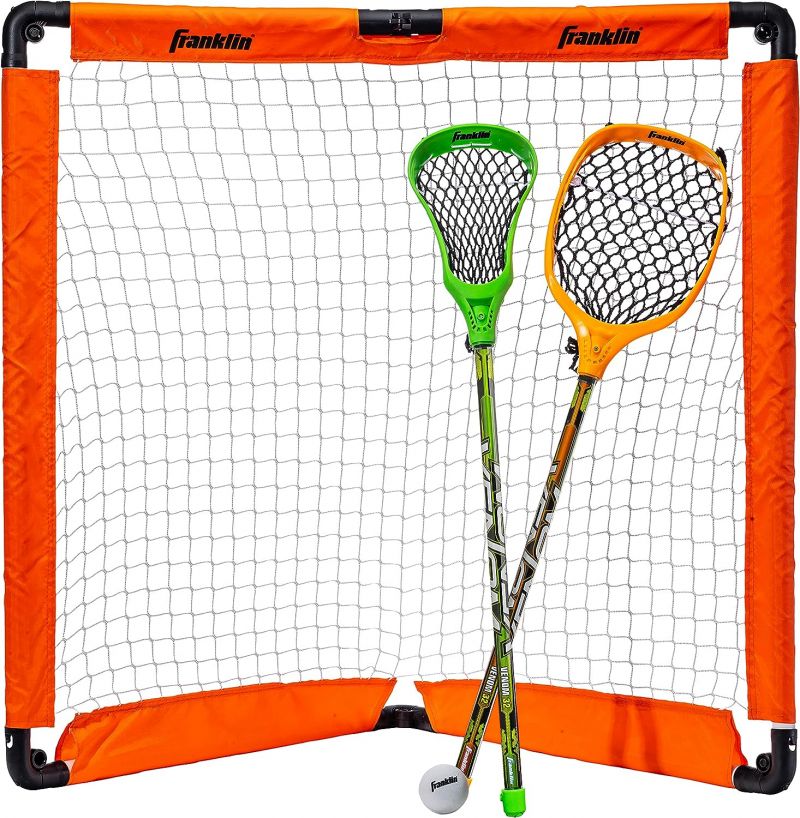
Breaking in a new lacrosse stick properly prepares it for peak performance. Ideal break-in optimizes pocket shape, shooting strings, and overall feel right before seasons or tournaments.
To break in a stick, gradually work it into practices to get it game ready. Start by tossing and catching with it to form the pocket to your preferences. Cradle and make quick sticks to refine pocket tension.
Take shots on the run and from different angles to configure shooting strings and wear in shooter sweet spots. Grab ground balls to define scoop points and train the sidewalls. Scrimmage lightly to get a feel for passing speed and precision.
Avoid over-practice that can fatigue the head and compromise its integrity. Allow recovery time between intensive sessions to prevent warping or damage.
Inspect the stick frequently while breaking it in and make minor adjustments as needed. You may need to tighten or redistribute shooting strings as they settle into grooves. Re-form pockets if shape loosens.
Keep the stick strung loosely at first for flexibility then tighten over time. End with strings, mesh, and sidewalls pulled to your optimal tension for games.
With a gradual yet diligent break-in process, your new stick transitions to on-field readiness. Allow a couple weeks minimum to properly stage in a new stick so it becomes the high-performing extension of your lacrosse skills.
Learning Proper Cradling, Scooping, and Throwing Techniques
Mastering essential lacrosse stick skills like cradling, scooping, and throwing requires focused practice and coaching. Dialing in proper technique establishes consistency.
Cradling means rhythmically moving the stick from side to side to maintain ball control when running. Use wrist motion more than arm motion for quicker rolls. Keep elbows tight to the body and hands separated to form a crisper channel.
On scoops, tilt the top hand back to flatten out the stick head as it makes contact with the ground. Drive through the ball firmly and accelerate upwards as you scoop and guide into the pocket’s center channel.
For throwing, shift weight from back to front foot as you step towards your target. Rotate hips and shoulders for added momentum and whip. Follow through straight towards your lead foot after release for accuracy.
Quick sticks teach pushing the ball straight out of the stick on catch. Catch lightly with your top hand while thrusting your bottom hand forward to make instant contact passes.
Throughout these motions, keep the head positioned above hands to maximize control. Heads lower than hands flop around more. Pull the stick tighter into the shoulder pocket for stability.
Drill extensively on these fundamentals at full speed in practice first to build muscle memory. Repetition cements proper form so techniques become second nature during intense game action.
With mastery over cradling, scooping, quick sticks, and throwing, handling and passing skills rapidly improve. Stickwork ultimately feeds into catching, shooting, and dodging prowess as well.
Choosing Protective Gear to Match Your Style of Play
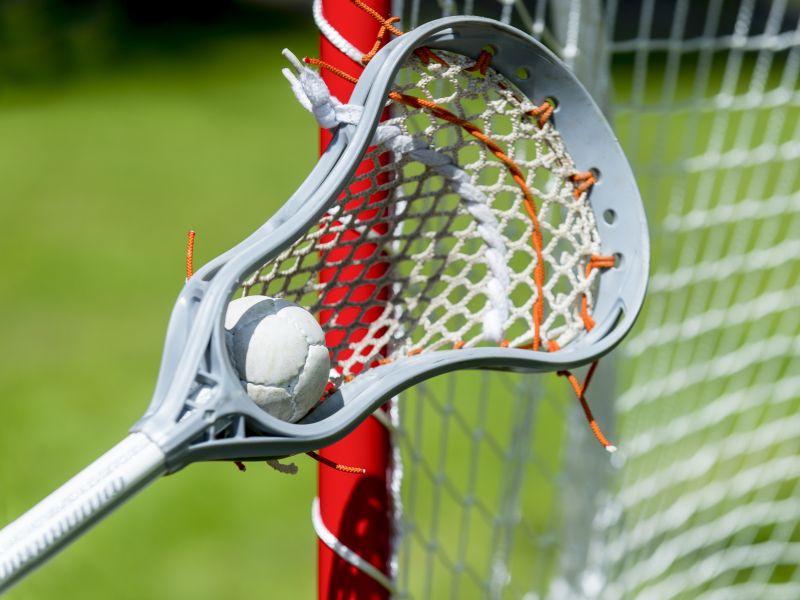
Selecting appropriate protective gear is vital for safe lacrosse participation. Matching equipment to your position and style of play optimizes protection and performance.
Stick players in tenacious contact roles need heavier padding for maximum impact absorption. Bulkier shoulder pads with extended rib protection are preferable for unrelenting defensemen.
Midfielders who transition between offense and defense benefit from lightweight, low-profile pads offering a balance of mobility and protection. Elbow pads with full coverage guard against checks.
Attacking players favor minimal pads that provide essential protection without hindering speed and agility. More flexible gloves maintain stick feel. Streamlined helmets add vision without excessive bulk.
Goalies need full comprehensive padding able to withstand high-velocity point blank shots. Extra arm and shoulder reinforcement, chest protectors and reinforced helmets prevent injury.
Women’s lacrosse equipment offers more breathability and mobility with less contact. Focus on vital areas like hands, eyes and head with lighter padding that won’t weigh you down.
Ensure all gear fits snugly without limiting mobility or comfort. Test different pad models to find the right balance of protection, flexibility and lightweight wearability for your needs.
Stocking Up on Lacrosse Balls for Practice and Games

Having a sufficient supply of quality lacrosse balls ensures you can make the most of practice while always having fresh balls ready for games. Stock up on an array of balls to cover your needs.
For practice, economical bulk bags let you affordably have lots of balls on hand for drills, shooting repetitions and scrimmages. These inexpensive balls stand up to heavy use.
Supplement with specialty balls like rebounders or bounce backs that return to you after shots for solo shooting practice. Softer indoor balls provide versatility for honing skills year-round.
For games, invest in higher grade balls like collegiate quality NOCSAE models used in NCAA play. These premium balls maintain maximum shape and bounce for optimal passing, catching and shooting.
Newer lacrosse balls utilize multiple layers and advanced materials to improve moisture resistance and grip. Textured cover surfaces enhance control and feel.
Keep an assortment of white balls for high visibility on grass. Carry contrasting orange or yellow balls as backups for low light conditions later in day.
With plenty of lacrosse balls on hand, you can push skills development further and always be game ready. Rotate practice balls as they wear and keep fresh gamers ready in your bag.
Selecting a Quality Lacrosse Helmet for Safety and Comfort
Finding the right lacrosse helmet is crucial for your protection and enjoyment of the sport. Invest in a helmet engineered for impact resistance, visibility and comfort.
Look for strong yet lightweight materials like compressed ABS or polycarbonate plastic shells resistant to dents and cracks. Ventilation ports keep helmets cool while not compromising integrity.
Ensure the helmet includes a facemask made of sturdy metals like titanium that won’t bend or obstruct vision from checks. Chin straps should evenly distribute load and absorb energy.
Padding inside should fully cushion frontal, side and rear impacts while wicking moisture. Removable liners allow customizing fit as head sizes change.
Opt for a helmet with an extended tail in back protecting the base of the skull and neck from blindside hits. More wrap-around cheek guards boost jaw safety.
Prioritize helmets granting wide peripheral views of the field so you can see checks coming. Visors help reduce glare while retaining visibility.
With a properly fitted helmet providing full cushioning, ventilation and visibility, you gain confidence taking hits and making plays. Don’t sacrifice safety or comfort—find a helmet that offers both.
Deciding Between Men’s and Women’s Lacrosse Equipment
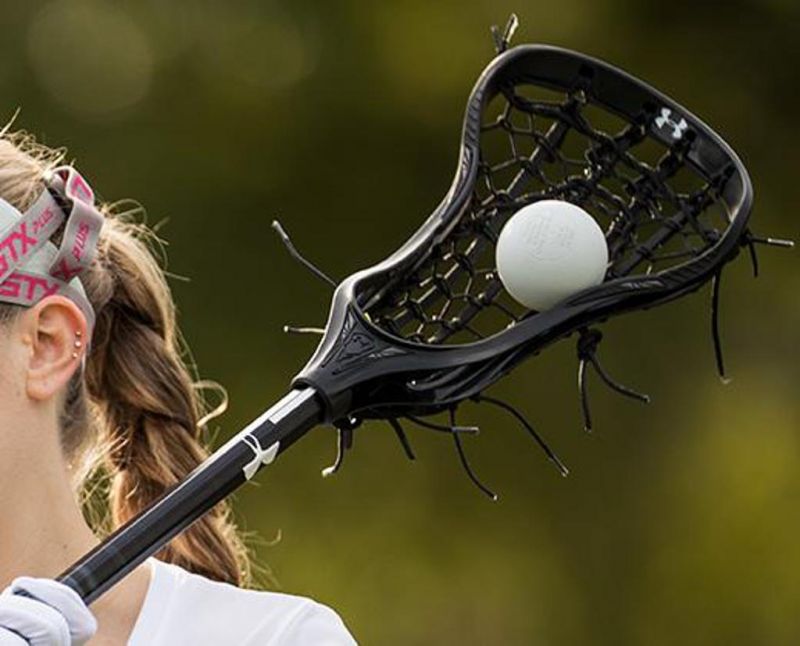
When purchasing lacrosse gear, carefully consider sizing, fit and protective differences between men’s and women’s equipment. Pick equipment aligned with your version of the sport.
Women’s lacrosse involves less contact, so bulky pads are unnecessary. Women’s pads feature more breathable tri-layer foam protecting key areas without sacrificing mobility.
Women’s gloves offer greater dexterity by omitting palm padding and using flexible materials across fingers. Lighter shoulder pads focus protection on the shoulders themselves.
For sticks, women’s handles are typically narrower for smaller hands. Women’s heads are legal up to 12 inches wide with shallower pockets for developing stick skills.
Women’s goggles optimize visibility and include flexible rubber-encased frames and ventilation to reduce fogging. Softer women’s balls enhance handling.
Men’s gear provides heavier shielding for hard hits. Shoulder pads have expanded chest plates, bicep plates and rib guards. Thicker gloves and elbow pads withstand hardcore contact.
Men’s sticks boast deeper pockets and more intricately strung and waxed mesh for superior ball control during physical play. Wider heads scoop ground balls more easily.
Trying on both men’s and women’s options ensures proper fit as sizing varies. Compare protection, movement and comfort to make the right choice.
Researching Lacrosse Stick Regulations to Avoid Penalties

Learning the specific regulations for lacrosse sticks is critical, as using an illegal stick can result in penalties and ejection from games. Research the rules to keep your stick compliant.
Men’s stick dimensions dictate minimum head widths of 6 inches up to maximums of 10-12 inches depending on level of play. Maximum lengths range from 40-72 inches. Pockets must sit 1.5 to 2 inches deep at deepest point.
Women’s sticks allow 8-12 inch head widths with 35.5-43.25 inch lengths dependent on age level. Pockets depths cannot exceed half the head’s width.
Rules also cover shooting string placement, sidewall stringing, and plastic components in mesh for hardness. Goalie sticks have their own size and stringing stipulations.
Sticks cannot contain any electronic components or toxic substances that could break and contaminate balls. No attachments like lights or mirrors can be added.
Authorities check sticks before games, so know the rules. If you play in multiple leagues with different guidelines, have sticks conforming to each level. Adjust and re-string sticks as needed between seasons.
By learning governing body specifications and proactively keeping sticks legal, you avoid in-game issues. Confirm regulations annually and get sticks formally checked when in doubt.